
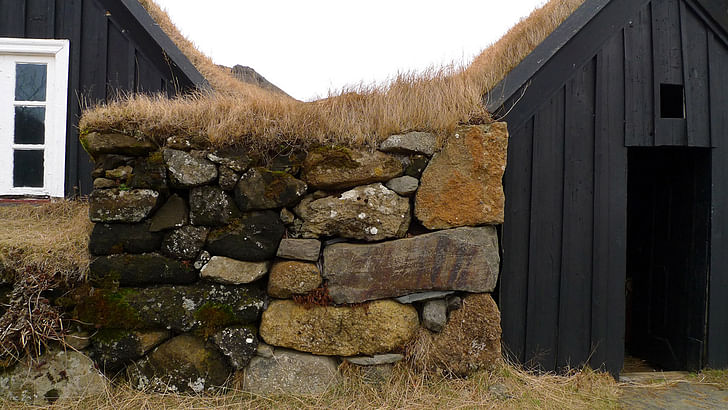
** impetus
As water increasingly becomes a politicized commodity and our global
water shortage becomes more dire, architecture must take steps to
improve relations with this fundamental human resource. In architecture,
materials and water are seen as incompatible. Typical construction
methods produce waterproof wall assemblies-—using flashing, vapor
barriers, asphalt shingles—to keep water out to prevent decay and
preserve indoor air quality. As a result, our built environment is
waterproofed like a rain slicker. Mass rainwater runoff is a lost
resource, a missed programmatic opportunity, and a detriment to
ecosystems.
Real water issues are usually addressed by large-scale engineering
solutions or small-scale landscape interventions, leaving architects
out. But what if the materials were different? There could be a place
for absorptive construction. Architecture could bring water into the
building. The city could seep. A building could be a pore.
** systems that seep
I spent 2010 studying fourteen select water systems around the world.
These systems convey, filter, and store rainwater and groundwater.
Mostly unmechanized, they implement basic hydrologic principles. The
systems have spaces embedded with water and use it for multiple
programmatic ends. Unlike our privatized and protected reservoirs, this
water is visible and accessible.
In many systems, water is not just a resource, but a material for ritual
cleansing or a symbol of life. The Balinese subaks flood wet-rice
terraces with blessed water from their volcanic spring temples. The roof
of the Umayyad Mezquita at Côrdoba drains water to feed the ablutions
fountain and irrigate a courtyard of orange trees. The Hindu pilgrims
who bathe at the deep, monsoon-fed Stepwell of Adalaj have spiritually
reached Varanasi. The water in these systems is a medium for ritual,
socializing, washing, swimming, and animal habitation.
** seeping materials
This research has inspired ideas for civic infrastructures, aquaphilic
construction, watery programming, and even hydrologic surfaces. One big
aim became to understand how the materials could inform absorptive
building systems. Some of the materials were new and other materials
were familiar, but used in new ways. The materials spurred new ideas of
how we might build and live.
The four following vignettes are examples from these systems that seep,
each making use of a unique material and process—vesicular basalt, sand,
sedge roots, and palm fiber.
percolate :: vesicular basalt + woolly fringe-moss
Snorralaug is a legendary pool named for Iceland’s medieval
historian Snorri Sturluson. Despite its dubious medieval heritage, the
pool is a geothermal hot tub located in steamy, rural Reykolt, near the
65th parallel. It is at least 200 years old, fed by a nearby hot spring
and cool conduit. The pool is round and shallow and constructed entirely
of vesicular basalt, a highly-porous, frothy lava. The warm pool water
slowly seeps underground through the lava stone and into the nearby
fields. There is no drain.
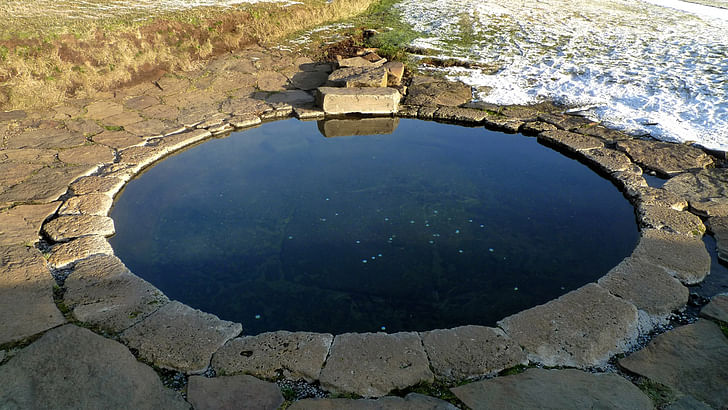

Vesicular basalt has many vesicles (tiny holes) which formed when the lava solidified. The molten lava comes to the surface, loses pressure, and cools. During this process, compounds dissolved in the lava quickly lose solubility, sublimate, and form small bubbles which are trapped in the solidified stone and become holes. Pumice and scoria are types of vesicular basalt. They have 50-80% porosity and very high permeability.

Geologically-young, Iceland is covered with vast lava heaths: lumpy, blackish expanses that stretch for miles. After about 100 years, plants begin to take root in the vesicles. Woolly Fringe-moss is the most common pioneer species and forms thick, spongy pillows on top of the rock. The lava + moss filters and drains rainwater through the heaths into substantial groundwater reservoirs that are tapped and recharged in Iceland’s geothermal energy process. The use of vesicular basalt as a building material was common in the old vernacular turf houses. It has recently reappeared as an internal and external building material. Reykjavik’s City Hall has moss-covered walls of vesicular basalt that drain roof water. In February, it was hung with icicles, the runoff frozen as it dripped off the moss.

filter :: sand + clay
Surrounded by the brackish lagoon, Venice was always wanting for fresh drinking water. To make use of their rain, Venetians built thousands of rainwater cisterns below the pavement of the public squares and palace courtyards.
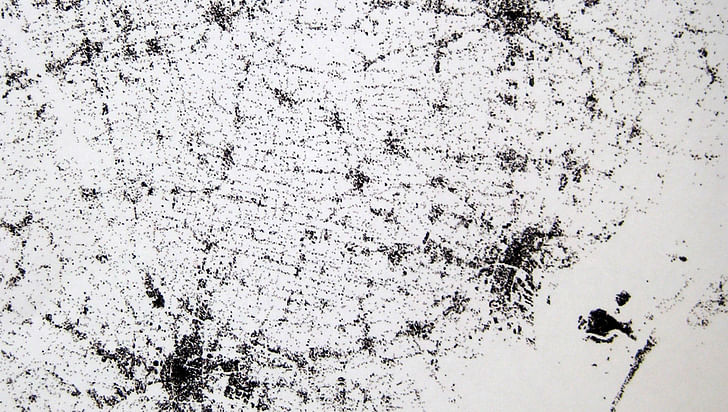
Each cistern began as a large void excavated into the island mud. They coated the hole with a 4’-thick layer of clay. In the center, they built the well column: a wide stone "pipe", perforated at the base. Around the well column, the clay bowl was packed with layers of cleaned sand, pebbles, and gravel. At the corners of the hole, just inside the clay perimeter, they embedded four drains into the sand and then the topped the sand with pavement stones. They call this whole assembly a pozzo, or well.

Four stories up, rain runs off the tile roofs and down onto the plaza pavement. All of the surfaces are sloped toward the cistern drains. The runoff passes through the drains, into the cistern, and slowly filters through the sand layers to the base of the well column. Residents then pumped filtered water back up to the surface.
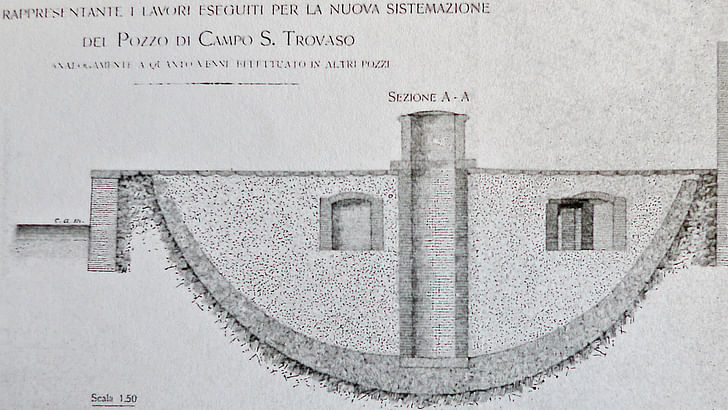
The sand and clay combination is the key to this system. The impermeable clay keeps the brackish lagoon water out, separate from the fresh water sand filter on the inside. The clay membrane functions like an aquiclude layer bounding a sand aquifer. The sand filters the rainwater and its compression strength obviates the need for a structural system below. With these ~6,000 sand cisterns in Venice (not including terra firma), the city was formerly a dense collection of fresh water aquifers, sitting in a saltwater lagoon!

float :: totora rhizome
Wailiqui is one of the floating islands of the Uros in Lake Titicaca, Peru. Located about 3 miles east of the port town of Puno, 60+ islands float low among the marsh rushes. The Uros people construct the islands from this rush, called totora, and its airy root base. Similar to a bulrush, totora (Schoenoplectus californicus) is a sedge, a grasslike plant.
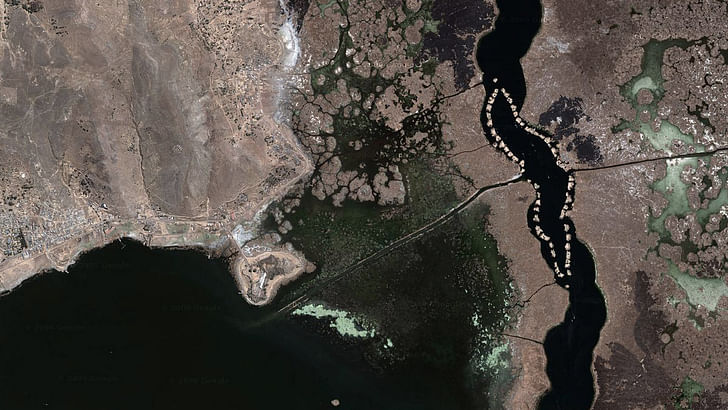
The tall, thick totora stalks have a multi-layered, rhizomed root structure called khili. Roughly 40"-60" deep, the base is a spidery, rhizomatic root mass, surrounded by peat. This root mass floats. Floating marshes are formed because the thick mat vegetation that forms on top of peat has buoyancy, a result of aerenchyma—air channels in root tissue that make it less dense than water. Additional buoyancy comes from the underwater anaerobic decomposition of the vegetation, in which gases get trapped in the root mass.
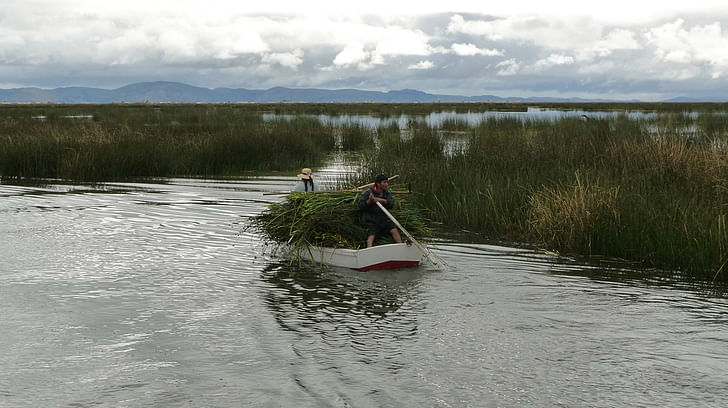
To build an island, the families harvest the khili from the lake, sometimes traveling 6+ miles by boat. They cut large blocks of the root base, about 5’ x 9’, and bring them back to Uros. They drive large stakes into the root blocks and lash them together to create the live, floating foundation and tether it to a nearby island or anchor it to the lake bottom fifty feet below. On top of the foundation, alternating layers of the cut totora stalks are distributed about 30" deep. The island’s surface is spongy—mostly dry with a lot of spring under foot. Over time, stalks in the water rot, while those out of the water gray and deteriorate in the sun. Continually replenished with fresh totora, the foundations last about 15-20 years.
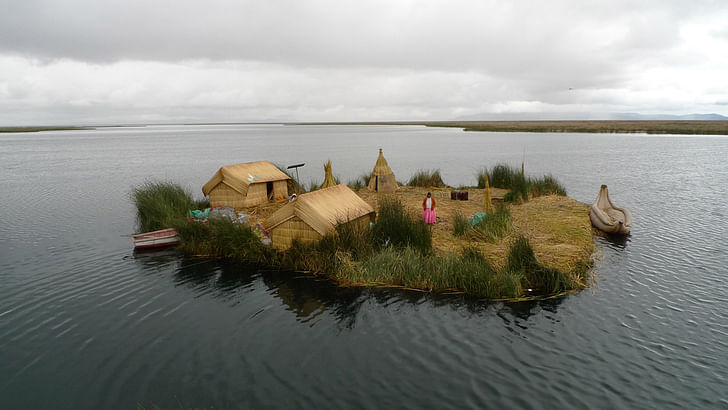
Houses, ovens, and gardens on the islands sit elevated on additional layers of totora. Bundled totora form mattresses and boats. Large mats of woven stalks cover the timber frames of the houses. The roof mats are of double thickness and lapped at the ridge line. I did notice a few bright blue tarps under some roof mats and plenty of PVs.
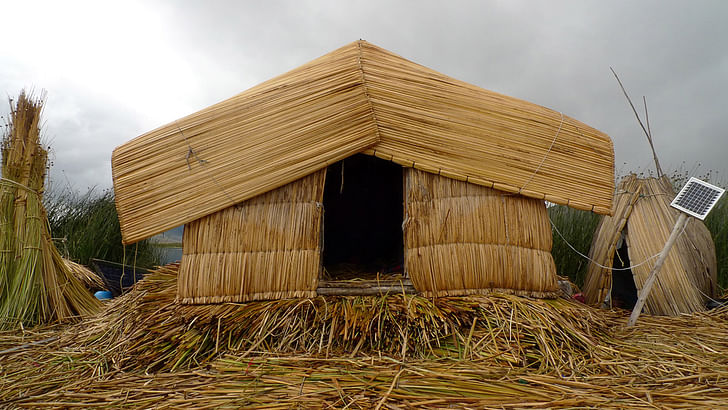
absorb :: palm fiber
Hindu temples in Bali are roofed with bamboo and ijuk. Ijuk is the long, black fiber that sits 18" deep over the bamboo roof slats, expertly trimmed in a dense bowl cut.
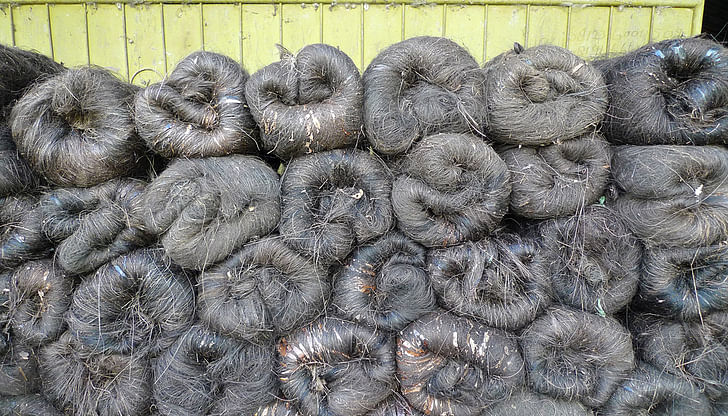
Ijuk fiber comes from the sugar palm Arenga pinnata. The feathered palm leaves have broad bases with hairy ends. As the palm grows, old leaves remain around the trunk, their bases sprouting coarse fiber. Over time, the fibers form a dense, tangled mass. The fiber is resistant to salt water, fresh water, and pests. With its high tensile strength, the fiber is used to make ropes and is being tested as a reinforcement filament in epoxy composites. With its high absorptive capacity and natural tannins, it is used to filter black water in septic systems.
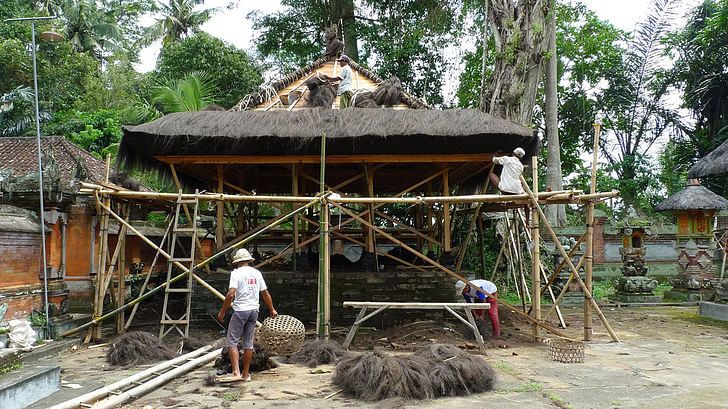
Balinese roof builders cut the tangles of fiber from the palms with scythes. Workers sort through heaps of the fiber, separate them like untangling hair, and prepare the roof components. A roof uses the fiber in four ways: long corner rolls, stout interior rolls, flat layers, and scrap fill. Roofers first lay the four corner rolls along the ridge lines and bind their ends at the apex. Then they fill the four flat triangular sides with the stout interior rolls, packed in tight and laid parallel to the slope of the roof. On top of the stout rolls, the roofers add some of the scrap fiber to fill in any gaps. The best fiber is in the flat layers on top. These layers are made by wrapping swaths of fiber around a bamboo slat and securing them with fiber rope. From eave to apex, the flat layers overlap about 10 inches. Professional trimmers precisely cut away excess fiber, creating a thick bevel. The trimmed rolls appear as black whorls in this deep mass. An ijuk roof lasts about 20 years.

**trajectory :: a building is a pore
In my thesis I am researching and designing for absorptive materials.
Maybe it will produce sopping, thickened buildings with baths and
gardens and fish.
4 Comments
Hi Eleanor,
Your descriptions explain the principles and issues so elegantly. Thank you! I'd love to learn more about your current projects.
Vicki
vjkarlan@hotmail.com
brilliant research! Looks like you had a great year. Hope you are able to continue writing about this concept.
that is all amazing stuff.
Good stuff, wish I had some of these examples to reference when I was doing my thesis.
Block this user
Are you sure you want to block this user and hide all related comments throughout the site?
Archinect
This is your first comment on Archinect. Your comment will be visible once approved.